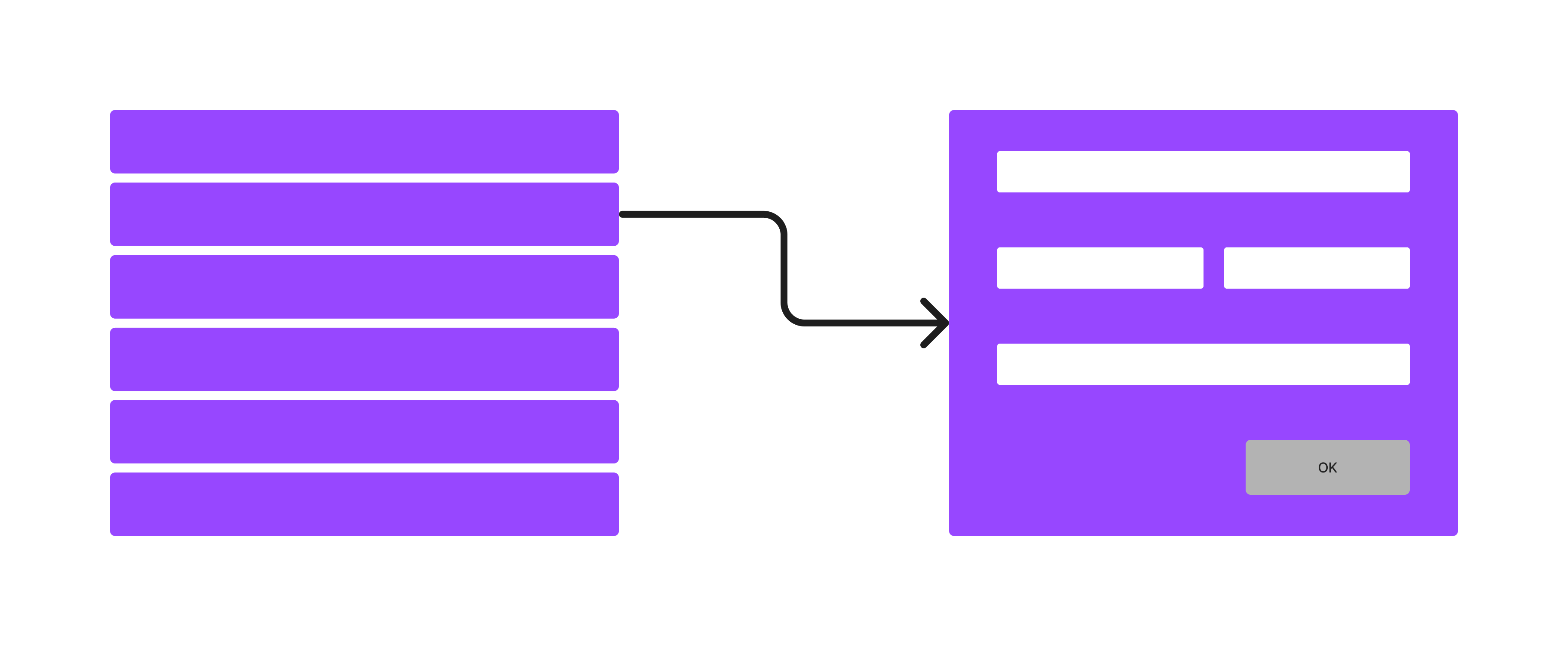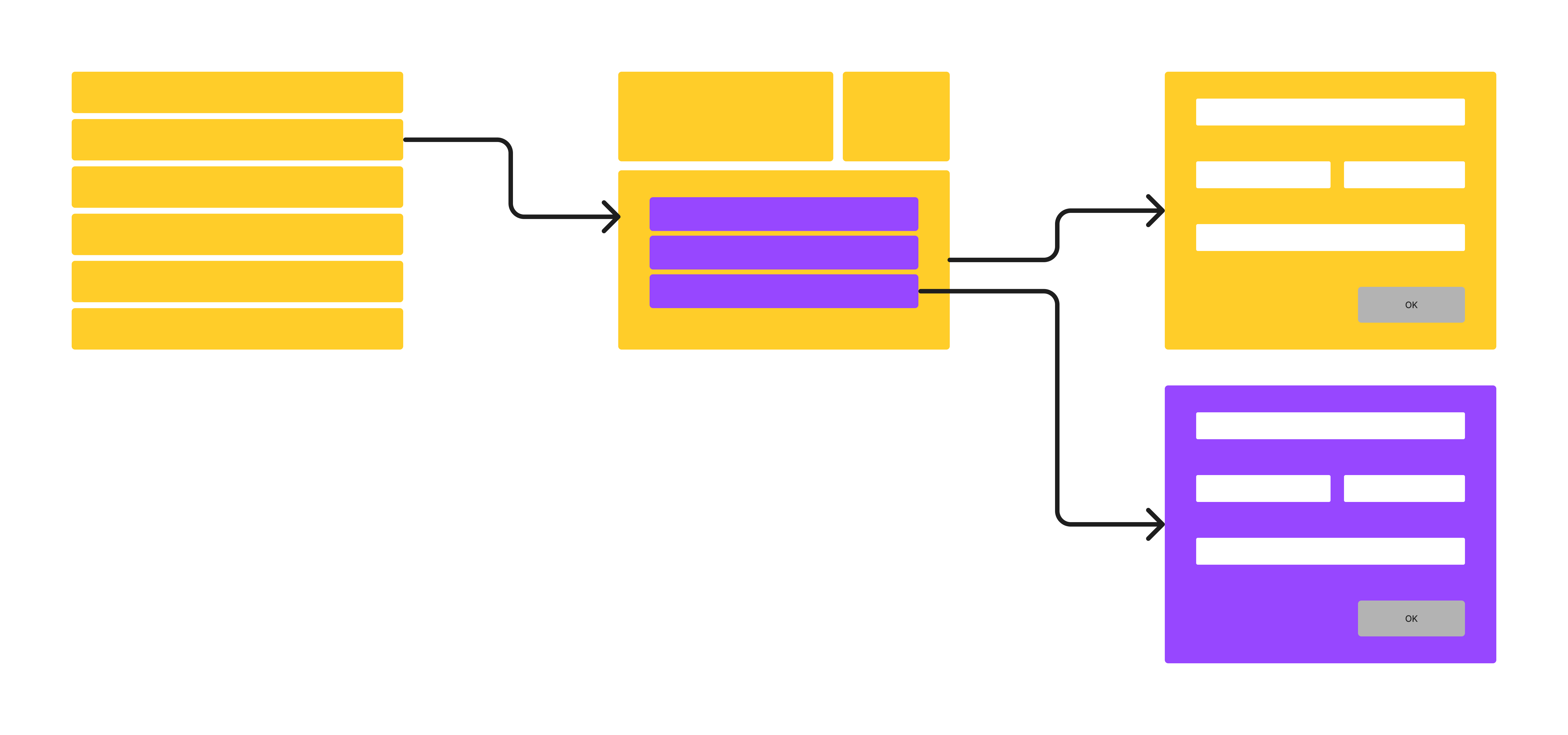Getting started
Terminology, general concept
In Sharp, we handle entities; an entity is simply a data structure which has a meaning in the application context. For instance, a Person, a Post or an Order. In the Eloquent world, for which Sharp is optimized, it's typically a Model — but it's not necessarily a 1-1 relationship, a Sharp entity can represent a portion of a Model, or several Models.
Each instance of an entity is called... an instance.
Each entity in Sharp can be displayed:
- in an
Entity List, which is the list of all theinstancesfor thisentity: with some configuration and code, the user can sort the data, add filters, pagination, and perform searches. From there we also gain access to applicativecommandsapplied either to aninstanceor to the whole (filtered) list, and to a simplestatechanger (the published state of an Article, for instance). All of that is described below. - In a
Show Page, optionally, to display aninstancedetails. - And in a
Form, either to update or create a newinstance.
Example
Let's take a simple example: we want to manage some shop, with 3 obvious entities: Order, Customer and Product.
We want to be able to list all the customers, to display a detailed view for each of them, and to create or update a customer. That’s an Entity List linking to a Show Page, linking to a Form:

For products, we decide that we don't need to build a Show Page:

The product Entity List may have filters, sorting columns and search, and an Entity state to manage the published state of each product.
Finally, orders, must be listed, detailed and updatable, and we also need to manage the product list of each order. That's an Entity List linking to a Show Page which contains another Entity List:

Maybe we can add an Entity Cmmand to export orders in a CSV file in the Entity List, and an Instance command on the order Show Page to declare the order as shipped.
This is a simple example to illustrate the main concepts of Sharp: we'll see in this guide how to build such structures but also more complexe ones, and how to manage states, commands, dashboards, authorizations, errors, validation... in the process.
Installation
Sharp 8 needs Laravel 10+ and PHP 8.2+.
- Add the package with composer:
composer require code16/sharp - And then publish assets:
php artisan vendor:publish --provider="Code16\Sharp\SharpServiceProvider" --tag=assets
A tip on this last command: you'll need fresh assets each time Sharp is updated, so a good practice is to add the command in the scripts.post-autoload-dump section of your composer.json file:
"scripts": {
[...]
"post-autoload-dump": [
"Illuminate\\Foundation\\ComposerScripts::postAutoloadDump",
"@php artisan vendor:publish --provider=Code16\\Sharp\\SharpServiceProvider --tag=assets --force",
"@php artisan package:discover"
]
},"scripts": {
[...]
"post-autoload-dump": [
"Illuminate\\Foundation\\ComposerScripts::postAutoloadDump",
"@php artisan vendor:publish --provider=Code16\\Sharp\\SharpServiceProvider --tag=assets --force",
"@php artisan package:discover"
]
},Configuration
Sharp needs a config/sharp.php config file, mainly to declare entities.
You can initialize this file with php artisan vendor:publish --provider="Code16\Sharp\SharpServiceProvider" --tag=config
Here's an example:
return [
'entities' => [
'products' => \App\Sharp\Entities\ProductEntity::class,
// Other entities...
]
];return [
'entities' => [
'products' => \App\Sharp\Entities\ProductEntity::class,
// Other entities...
]
];This ProductEntity class could be written like this:
class ProductEntity extends SharpEntity
{
protected string $label = 'Product';
protected ?string $list = ProductList::class;
protected ?string $show = ProductShow::class;
protected ?string $form = ProductForm::class;
protected ?string $policy = ProductPolicy::class;
}class ProductEntity extends SharpEntity
{
protected string $label = 'Product';
protected ?string $list = ProductList::class;
protected ?string $show = ProductShow::class;
protected ?string $form = ProductForm::class;
protected ?string $policy = ProductPolicy::class;
}We chose to define:
- a
listclass, responsible for theEntity List, - a
showclass, responsible for displaying aninstancein aShow Page, - a
formclass, responsible for the create and editForm, - and a
policyclass, for authorizations.
Almost each one is optional, in fact: we could skip the show and go straight to the form from the list, for instance.
We'll get into all those classes in this guide. The important thing to notice is that Sharp provides base classes to handle all the wiring (and more), but as we'll see, the applicative code is totally up to you.
TIP
Instead of directly declaring an array of entities in the config file, you can type the full path of a class that implements the Code16\Sharp\Utils\Entities\SharpEntityResolver interface, and define here a public function entityClassName(string $entityKey): ?string method.
Access to Sharp
Once installed, Sharp is accessible via the url /sharp, by default. If you wish to change this default value, you'll need to define the custom_url_segment config value, in config/sharp.php:
// config/sharp.php
return [
'name' => 'My Sharp app',
'custom_url_segment' => 'admin',
// ...
]// config/sharp.php
return [
'name' => 'My Sharp app',
'custom_url_segment' => 'admin',
// ...
]